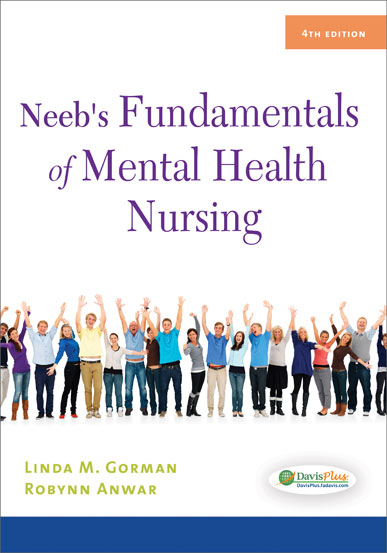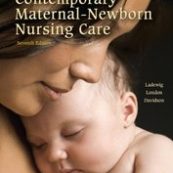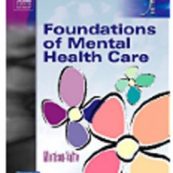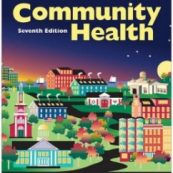Test Bank Neebs Fundamentals Mental Health Nursing 4th Edition Gorman Anwar
$38.00
Test Bank Neebs Fundamentals Mental Health Nursing 4th Edition Gorman Anwar
- Description
- Reviews (0)
Description
You will receive this product immediate after placing the order
Get your degree with ease by using our files. We do not keep any logs and we do not log any information. What does this mean for you? This means, your order is completely anonymous and confidential. Part of our service allows you to purchase these files without anyone else knowing. There is no risk and you have nothing to lose. If you are using this very text book in school right now, then you will need this nursing test bank to learn important core knowledge so you can be the ultimate nurse. Add this product to your cart and checkout to receive the download for your nursing test bank for Test Bank Neebs Fundamentals Mental Health Nursing 4th Edition Gorman Anwar
== SAMPLE ==
Chapter 2: Basics of Communications
Multiple Choice
Identify the choice that best completes the statement or answers the question.
____ 1. Which question by the nurse would gain the most information from a patient experiencing a marital crisis?
A. “Do you hate your spouse?”
B. “Do you get along with your in-laws?”
C. “Do you talk out your problems with your spouse?”
D. “What is it like at home with your spouse?”
____ 2. Mrs. R., the mother of a young schizophrenic patient, seeks you out and begins to cry. She expresses concern over her daughter’s behavior. Your best response to this woman is:
A. “What is it that concerns you the most, Mrs. R.?”
B. “Well, you know, that is part of the illness.”
C. “Here is a book on schizophrenia. This will help you.”
D. “Are you afraid your daughter will always be like this?”
____ 3. Linda is pacing the floor and appears extremely anxious. The day shift nurse approaches Linda in an attempt to lessen her anxiety. The most therapeutic statement by the nurse would be:
A. How about watching a football game?
B. Tell me how you are feeling today.
C. What do you have to be upset about now?
D. Ignore the client.
____ 4. A patient states, “I don’t know what the pills are for or why I am taking them, so I don’t want them.” What therapeutic communication would help this patient?
A. Ask for what you need
B. Silence
C. Using general leads
D. Giving information
____ 5. To practice effectively in mental health, the nurse should be able to:
A. Solve his or her own personal problems without assistance from others.
B. Comfortably point out the patient shortcomings and provide advice about how to improve.
C. Bring patients and coworkers into compliance with societal rules and norms.
D. Demonstrate therapeutic communication.
Completion
Complete each statement.
6. The nurse plans to have a therapeutic communication with the client. To begin that therapeutic communication the nurse must first establish _________________ with the client.
7. Communication has three parts: the sender, the message, and the _____________.
8. When appropriate, the nurse can use _____________________ as part of an interaction when there is no talking. This can communicate support.
9. A theory of communication that emphasizes the three ways to communicate—hearing, seeing, and touching—is called _________________________
10. Expressive, receptive, and global are types of _______________.
11. Advising, asking closed-ended questions, and changing the subject are examples of ________________ to therapeutic communication.
Multiple Response
Identify one or more choices that best complete the statement or answer the question.
____ 12. A nurse is working with a patient and attempts to communicate effectively with him or her. Techniques the nurse can use to help communication include (select all that apply):
A. Clarifying terms.
B. Remaining silent.
C. Asking open-ended questions.
D. Offering false reassurance
E. Discouraging the person from expressing feelings that are unacceptable.
____ 13. The nurse may find that patients from other countries use different terminology than the nurse born in the United States. The difference in terminology may seem harmless to us but offensive to the foreign patient. Differences noted between different cultures are (select all that apply):
A. Eye contact.
B. Slang terms.
C. Hand gestures.
D. Gender references.
____ 14. The three components of communication are (select all that apply):
A. Impairment.
B. Message.
C. Sender.
D. Receiver.
____ 15. Nurses understand that when caring for patients with mental illnesses, a nurse’s communication is (select all that apply):
A. An active process that includes participating and listening and speaking.
B. A complex activity.
C. Exchanging information.
D. Verbal and nonverbal.
E. A one way path from nurse to patient.
F. Advising.
____ 16. The patient is concerned about his doctor and what the doctor has prescribed. The nurse making rounds notices the patient sitting on the side of the bed in deep thought. The nurse comes into the room and the patient begins to tell her his concerns about a new order. The nurse advises the patient, “If I were you, I would find another doctor.”
How does this statement by the nurse block communication (select all that apply)?
A. It tells the patient that his concerns are not valid.
B. It gives the idea that the nurse’s values are the correct ones.
C. It puts words in the patient’s mouth.
D. It hurts the nurse’s credibility if the solution doesn’t help the patient.
E. It discourages yes or no answers.
F. It inhibits the patient from telling you what his concerns are.
____ 17. The following types of patients require adaptive communication techniques (select all that apply):
A. A patient who is blind.
B. A patient who has dysphasia.
C. A patient who is schizophrenic.
D. A patient who is elderly.
E. A patient with dysphagia.
F. A patient who has language differences from the staff.
____ 18. Which of the following are characteristics of assertive communication (select all that apply)?
A. Statements begin with the word “you.”
B. Statements deal with thoughts and feelings.
C. It is a form of blaming.
D. It puts responsibility for the interaction on the other person.
E. It is a technique of personal empowerment.
F. It is self-responsible.
Chapter 2: Basics of Communications
Answer Section
MULTIPLE CHOICE
1. ANS: D
Encourages expression of feelings rather than a yes/no answer. Use of open-ended questions facilitates more open communication.
PTS: 1 REF: Chapter 2: Basics of Communication; Therapeutic Communication; page 21-25
KEY: Integrated Processes: Nursing Process: Implementation | Content Area: Mental Health: Therapeutic communication | Cognitive Level: Comprehension | Client Need: Psychosocial Integrity: Therapeutic communication
2. ANS: A
The correct response is open ended to seek out more specifically why she is upset. Responses B and C shut down communication. Response D is making an assumption of why she is upset.
PTS: 1 REF: Chapter 2: Basics of Communication; Therapeutic Communication; page 24-25
KEY: Integrated Processes: Nursing Process: Implementation | Content Area: Mental Health: Psychotic disorders: Therapeutic nursing process | Cognitive Level: Application | Client Need: Psychosocial Integrity: Therapeutic communication
3. ANS: B
To keep open communication with the patient, the nurse should ask open-ended questions.
PTS: 1 REF: Chapter 2: Basics of Communication; Therapeutic Communication; page 24
KEY: Integrated Processes: Caring | Content Area: Mental Health: Communication | Cognitive Level: Synthesis | Client Need: Psychosocial Integrity: Stress Management
4. ANS: D
Giving information can increase rapport, reduce patient anxiety, and suggest patient collaboration.
PTS: 1 REF: Chapter 2: Basics of Communication; Therapeutic Communication; page 25
KEY: Integrated Processes: Teaching/Learning | Content Area: Mental Health: Therapeutic Communication | Cognitive Level: Application | Client Need: Psychosocial Integrity: Therapeutic Communication/Health Promotion and Maintenance: Principles of Teaching/Learning
5. ANS: A
Good communication skills are essential for working in mental health. Good communication skills center around being able to promote open communication with such techniques as good listening, use of open-ended questions, and appropriate use of silence to be therapeutic.
PTS: 1
REF: Chapter 2: Basics of Communication; Techniques of Therapeutic/Helping Communication; page 23
KEY: Integrated Processes: Communication and Documentation | Content Area: Mental Health: Therapeutic Nursing Process | Cognitive Level: Application | Client Need: Psychosocial Integrity: Therapeutic Communication
COMPLETION
6. ANS:
rapport
Rapport implies there is mutual understanding and trust. The communication can be both verbal and nonverbal.
PTS: 1 REF: Chapter 2: Basics of Communication; Therapeutic Communication; page 23
KEY: Integrated Processes: Communication and Documentation | Content Area: Mental Health: Therapeutic Communication | Cognitive Level: Synthesis | Client Need: Psychosocial Integrity: Therapeutic Communication
7. ANS:
receiver
Communication is not just about getting your message out, it also includes how the message is received.
PTS: 1 REF: Chapter 2: Basics of Communication; Communication Theory; page 16
KEY: Integrated Processes: Communication and Documentation | Content Area: Mental Health: Communication | Cognitive Level: Knowledge | Client Need: Psychosocial Integrity: Therapeutic Communication
8. ANS:
silence
Silence allows the nurse and the patient time to collect their thoughts. It is a therapeutic technique of communication and demonstrates support and acceptance.
PTS: 1 REF: Chapter 2: Basics of Communication; Therapeutic Communication; page 26
KEY: Integrated Processes: Caring/Communication and documentation | Content Area: Mental Health: Therapeutic Communication | Cognitive Level: Comprehension | Client Need: Psychosocial Integrity: Therapeutic Communication
9. ANS:
neurolinguistic programming
Neurolinguistic programming (NLP) was developed by Milton Erickson, John Grinder, and Richard Bandler. NLP can be used in conjunction with hypnosis and other treatment modalities giving insight into how one views the world.
PTS: 1 REF: Chapter 2: Basics of Communication; Types of Communication; page 18-19
KEY: Integrated Processes: Communication and Documentation | Content Area: Mental Health: Therapeutic Communication | Cognitive Level: Knowledge | Client Need: Psychosocial Integrity: Therapeutic Communication
10. ANS:
aphasia
Patients with speech difficulties or challenges have an aphasic disorder. Expressive is difficulty in verbal expression, receptive is difficulty with interpretation of written or verbal communication, and global is a combination of receptive and expressive.
PTS: 1
REF: Chapter 2: Basics of Communication; Challenges to Communication; Table 2-1 Types of Aphasia; page 20
KEY: Integrated Processes: Communication and Documentation | Content Area: Mental Health: Therapeutic Communication | Cognitive Level: Knowledge | Client Need: Psychosocial Integrity: Therapeutic Communication
11. ANS:
blocks or barriers
These blocks to communication interfere with patient-nurse interaction to inhibit good communication.
PTS: 1
REF: Chapter 2: Basics of Communication; Blocks to Therapeutic Communication; page 22-23
KEY: Integrated Processes: Communication and Documentation | Content Area: Mental Health: Therapeutic Communication | Cognitive Level: Comprehension | Client Need: Psychosocial Integrity: Therapeutic Communication
MULTIPLE RESPONSE
12. ANS: A, B, C
Effective communication between the nurse and the patient includes approaches that give the patient opportunities to express himself or herself.
PTS: 1
REF: Chapter 2: Basics of Communication; Techniques for Therapeutic Communication; page 24 and 26
KEY: Integrated Processes: Communication and Documentation | Content Area: Mental Health: Therapeutic Communication | Cognitive Level: Application | Client Need: Psychosocial Integrity: Therapeutic Communication
13. ANS: A, B, C, D
Verbal and nonverbal communication doesn’t always have the same meaning in other cultures. The same communication can be understood by another culture as offensive.
PTS: 1
REF: Chapter 2: Basics of Communication; Nonverbal Communication ; Box 2-1 Examples of Communication with Cultural Implications; page 17
KEY: Integrated Processes: Teaching/Learning | Content Area: Mental Health: Communication | Cognitive Level: Comprehension | Client Need: Psychosocial Integrity: Therapeutic Communication
14. ANS: B, C, D
Communication with others requires these three components.
PTS: 1 REF: Chapter 2: Basics of Communication; Communication Theory; page 16
KEY: Integrated Processes: Communication and Documentation | Content Area: Mental Health: Therapeutic Communication | Cognitive Level: Knowledge | Client Need: Psychosocial Integrity: Therapeutic Communication
15. ANS: A, B, C, D
Communication is important when determining the patient’s needs. It is not a passive process but an active, two-way activity between patient and nurse. Generally the nurse’s role is not to advise patients but to listen and support.
PTS: 1 REF: Chapter 2: Basics of Communication; Therapeutic Communication; page 24
KEY: Integrated Processes: Communication and Documentation | Content Area: Mental Health: Therapeutic Communication | Cognitive Level: Application
16. ANS: B, C, D, F
Communication with patients should be purposeful and unbiased. Giving advice when the patient has not fully expressed his concerns inhibits and distracts the patient from what he is trying to communicate.
PTS: 1 REF: Chapter 2: Basics of Communication; Therapeutic Communication; page 21-22
KEY: Integrated Processes: Communication and Documentation | Content Area: Mental Health: Communication | Cognitive Level: Evaluation
17. ANS: A, B, F
Although communication can be challenging, there may be temporary or permanent techniques to assist with communication. Patients with challenges to sight, sound, and speech require adaptive techniques. Those who speak a different language than the provider also need adaptive techniques.
PTS: 1
REF: Chapter 2: Basics of Communication; Challenges to Communication; page 28-29
KEY: Integrated Processes: Communication and Documentation | Content Area: Mental Health: Therapeutic Communication | Cognitive Level: Comprehension
18. ANS: B, E, F
Assertive communication begins with the word “I.” Other characteristics include speaking up for oneself in a respectful manner, verbalizing one’s thoughts and feelings, and being honest.
PTS: 1 REF: Chapter 2: Basics of Communication; Types of Communication; page 18
KEY: Integrated Processes: Communication and Documentation | Content Area: Mental Health: Therapeutic Communication | Cognitive Level: Application | Client Need: Psychosocial Integrity: Therapeutic Communication
Do you have any questions? Would you like a sample sent to you? Just send us an email at inquiry@testbanksafe.net (no spaces). We will respond as soon as possible.
Be the first to review “Test Bank Neebs Fundamentals Mental Health Nursing 4th Edition Gorman Anwar”
You must be logged in to post a review.














Reviews
There are no reviews yet.